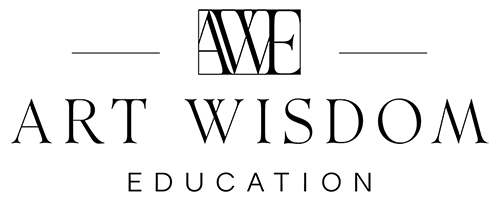Empowering Artistry: Navigating Intellectual Property Rights for Global Success
In the pulsing heart of the art world, where creativity meets commerce, safeguarding our creations is essential. Intellectual Property (IP) rights are the guardians of our imagination, ensuring our artistic work remains rightfully ours. These rights, woven from our experiences, dreams, and intellectual rigor, are crucial for every artist seeking longevity and respect in their craft.
Navigating the complex landscape of IP rights is as intricate as the art itself. This journey, often marked by vulnerability when facing infringement, has led me to an invaluable truth: awareness and understanding of IP rights are not optional but fundamental.
As I prepare to launch "The Quantum Artist," I reflect on the many artists at this crossroads. This course transcends legal jargon; it's a manifesto for the modern artist, navigating the realms of copyrights, patents, and trademarks. We'll explore the essence of IP rights, share real-life examples, and uncover global IP law nuances. This course, launching in summer 2024, is your gateway to mastering the art of protecting and sustaining your creative work.
The Heart of Creativity: Understanding IP Rights
An artist's work is more than just the final brushstroke or the last photo snap. It's a mix of inspiration, hard work, and a commitment to staying original. Intellectual Property Rights are like a golden seal on this commitment, making sure we have full control over what we create. These rights are crucial for us artists—they're not just fancy legal terms, but the foundation that keeps our art truly ours. IP covers everything that makes our work unique, from our signature styles to the unique patterns we dream up.
When I first got to grips with IP rights, it felt like I'd found a secret map. It opened my eyes to a world where I could share my art safely and smartly. Getting to know IP was a game-changer; it meant I could share my work without fear, knowing I had the law on my side to keep my creativity safe.
Real-Life Examples of IP Conflicts
The chronicles of the art domain are replete with tales of IP conflicts that serve as somber lessons for the unguarded artist. Consider the poignant saga of Shepard Fairey and the "Hope" poster, a stirring piece that became synonymous with Barack Obama's 2008 presidential campaign. Fairey's use of an Associated Press photograph without permission sparked a legal battle, highlighting the precarious line between inspiration and infringement. Then there's the infamous dispute between photographer Art Rogers and artist Jeff Koons, where Koons' adaptation of a Rogers photograph into a set of statues, "String of Puppies," was ruled as infringement—a stark reminder of the sanctity of original work.
Another cautionary narrative is that of street artist Banksy, whose works, despite their elusive creator, have been a repeated target for unauthorized reproduction. In a recent turn of events, a greeting card company's attempt to trademark Banksy's art propelled him into a legal struggle for his own anonymity versus the need to claim his works. These cases, each unique in their unfolding, converge on a single point: the necessity for artists to be vigilant custodians of their own creations.
Proactive Protection: Strategies and Tools
Navigating the digital world as an artist isn't just about being savvy online. It's also about using the right tools to keep your art safe from misuse. Start with watermarking – it's a simple way to show you're the creator without being too in-your-face. Tools like Digimarc are great for this, adding a protective layer that sticks with your art wherever it's shared online. For the not-so-obvious, adding metadata to your digital files, say with Adobe Bridge, can secretly lock in your ownership details. And if you're working on canvases or big installations, getting your hands on some templates from groups like the Artists Rights Society can help you keep a formal record of your work's history.
Remember, though, having the right tools is just part of the game. You'll also need a solid IP strategy, and sometimes that means chatting with IP lawyers who know their stuff. Organizations like Volunteer Lawyers for the Arts are awesome for free advice, and groups like WIPO are full of resources and contacts to help artists worldwide.
Five Common Mistakes to Avoid
In the pursuit of creative recognition, overlooking the fine print of IP rights can lead to pitfalls. One common misstep is neglecting to formally register your copyright, which, despite the protection afforded upon creation, is a legal fortification for your work. Equally detrimental is the disregard for contracts when collaborating; always ensure agreements explicitly state the ownership terms. Artists often underestimate the power of a solid paper trail—always document the creation process and retain drafts. Avoid the pitfall of publishing your work without understanding the terms of the platform, as some may claim rights over posted content. Lastly, don't let the informality of the art community lull you into a false sense of security; verbal agreements are not substitutes for written contracts, especially when your IP is at stake.
Your Rights Challenged: Five Steps to Take
When the sanctity of your intellectual property is breached, immediate action is key. Firstly, collect evidence: screenshots, web addresses, and any relevant communication. Next, issue a cease and desist letter, a formal request for the infringer to stop unauthorized use, which can be drafted with legal templates or an attorney's assistance. If the infringement persists, consult an IP lawyer to explore further legal action; many offer initial consultations free of charge. Consider alternative dispute resolutions such as mediation, often a quicker and more cost-effective method than court proceedings. Lastly, document the entire process meticulously. Each correspondence and action taken adds to the robustness of your case, ensuring you're prepared for any legal pathway.
Global IP Landscape: Understanding Regional Differences
Intellectual property rights, much like the cultural nuances of art, vary significantly across the globe. In the United States, copyright protection is automatically bestowed upon creation, but registering with the U.S. Copyright Office bolsters enforcement capabilities. Across the Atlantic, the European Union's regulations offer a harmonized approach, yet nuances exist; for instance, the UK's 'unregistered design right' provides automatic protection for designs, separate from copyright. In Asia, laws can be stringent, but enforcement often varies, necessitating local legal counsel for international artists. African countries may have less stringent IP laws, but regional bodies like OAPI (African Intellectual Property Organization) work towards harmonizing the protection. South American countries are bolstering their IP systems, with organizations like INPI in Brazil leading the charge in protection and enforcement. Navigating this mosaic of IP laws requires an understanding of both local and international legal frameworks—an endeavor where expert guidance is invaluable.
Conclusion:
Our art is more than just a job—it's a huge part of who we are. So, understanding and protecting our intellectual property rights isn't just about following legal rules; it's key to keeping our art and our future safe. It's a journey that's all about staying sharp and learning as we go, making sure our creative legacy stays ours.
While waiting for my course "The Quantum Artist" to launch in summer 2024, check out our free resource, "20 Ways to Secure Your Art Online." It's packed with tips to keep your IP rights safe in the meantime. This PDF isn't just another class; it's a deep dive into the world of artists’ rights, made just for artists. We'll cover everything from smart strategies to global tips and tricks, breaking down the complex stuff into something you can really use.
Come along for the ride and let's push our art careers to new heights, all while keeping our creations safe. "The Quantum Artist" is about building a lasting legacy in an ever-changing art world.


